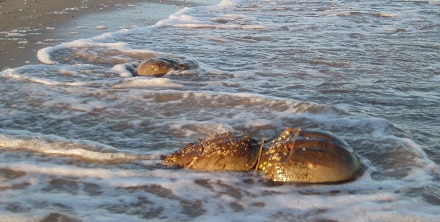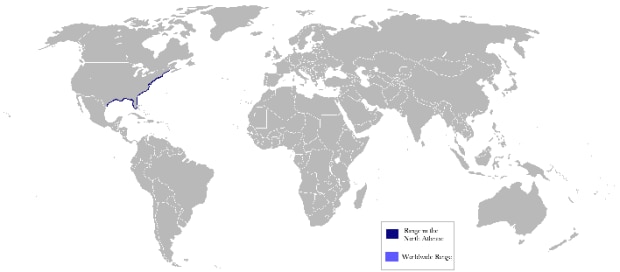Appearance
- Female horseshoe crabs grow to around 2 feet long, while males are about 30% smaller. Young crabs are usually light brown, but turn green to dark brown or black as they get older. Some horseshoe crabs also have organisms that live on their shells.
- Mature males have claws that resemble boxing gloves that are made to grasp a female's shell while mating.
Horseshoe crab facts
- Species name: Limulus polyphemus
- More closely related to spiders and scorpions than true crabs.
- Horseshoe crabs eat:
- Razor clams
- Surf clams
- Blue mussels
- Soft-shelled clams
- Polychaete and nemertean worms
- Horseshoe crab eggs are eaten by many species of shorebirds. The birds depend on the energy from eating the eggs to fuel their long migrations. Crabs, shrimp and small fish also eat the eggs and small juvenile horseshoe crabs.
- Larger horseshoe crabs are eaten by sharks, sea turtles, and gulls.
- Females lay over 88,000 eggs.
- Most commonly seen in Massachusetts while mating on sandy beaches in May and June.
- The eggs incubate in sand for 2-4 weeks, but some remain buried during winter to hatch the following spring.
- Young horseshoe crabs stay in shallow water areas, but adults go up to 650 feet deep.
- They reach maturity around 9-11 years old and can live to be around 20 years old.
- Horseshoe crabs are harvested for bait to catch whelk and eel, but are also caught for the biomedical industry.
- The biomedical industry uses the blood of horseshoe crabs to produce Limulus amebocyte lysate (LAL) which is used to test medical equipment and supplies for bacteria that can make people sick.
- Atlantic horseshoe crabs live along the Atlantic coast from the Gulf of Mexico to Maine.
Contact
Online
DMF Staff Directory
Contact DMF staff
Fax
(508) 990-0449
Address
836 S Rodney French Blvd, New Bedford, MA 02744

